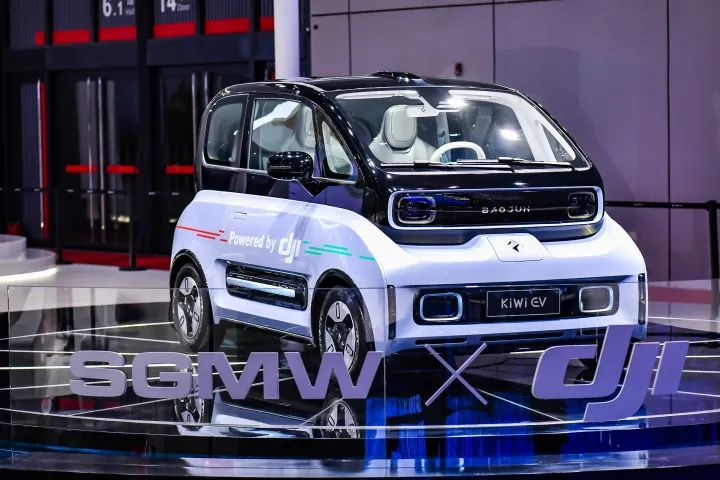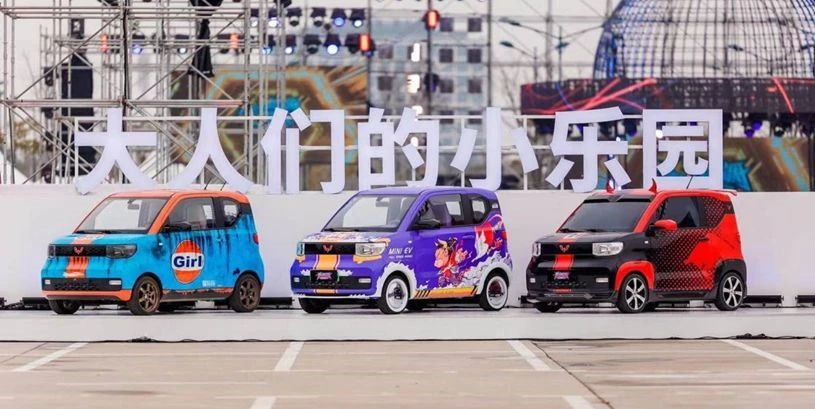Author: Passionate about autonomous driving
Introduction
This week is the 2021 Shanghai Auto Show, the first A-class auto show held on schedule after the epidemic. After being suppressed for a long time, various automakers have released big moves. According to statistics, there are approximately hundreds of new vehicle models released in this auto show. The theme this year is embracing change. I found that one of the changes in this auto show is the increasing popularity of car intelligence. Some mid-to-low-end car markets are equipped with intelligent driving functions, indicating that the cost of car intelligence is becoming lower and lower.
This year, XPeng P5 has 32 sensors, including two Lidars, and the price can be controlled within 250,000 yuan. Huawei’s HiCar is equipped with two Lidars, with a price of around 200,000 yuan. IDEAL has also announced that it will not charge extra for autonomous driving. Similarly, Wuling Hongguang, which is priced below 100,000 yuan, has started to cooperate with DJI to develop intelligent cabins and intelligent driving.

SAIC-GM-Wuling and DJI jointly create “smart driving for everyone”, and the strategic cooperation achievements of both parties will be first applied to the BAOJUN brand model and realized mass production and listing within this year.
It is reported that the main body of the strategic cooperation between DJI and SAIC-GM-Wuling is DJI Automotive, which is a brand under DJI that specializes in providing overall solutions for intelligent driving. Further understanding shows that the strategic cooperation between SAIC-GM-Wuling and DJI is not a simple parts procurement model, but a joint promotion of the landing of the entire intelligent driving system.
On the wave of intelligence, automakers are looking for their “soul mates”. BYD and BAIC have found Huawei, while Geely and Changan have chosen Baidu. However, no matter how they choose, the pace of automotive intelligence will become bigger and faster. DJI, a giant in unmanned aerial vehicles, and Wuling, a carmaker for the people, how can they come together and achieve win-win results?
DJI is a dark horse in cross-border intelligent driving

DJI’s main business is unmanned aerial vehicles, but it has been quietly investing in the research of intelligent driving technology.
In 2016, it obtained the first batch of intelligent networked car testing licenses in Shenzhen and began routine and large-scale testing of various road scenarios. In 2019, the DJI Automotive brand was officially established, positioning itself as Teri1, and built the first vehicle regulatory-level manufacturing plant, involving the research and development, production, and sales of intelligent driving systems and their core components, and the relevant patents have exceeded 1,000.
 Unmanned aerial vehicles (UAVs) are also involved in automatic driving vision perception and positioning, so DJI’s research on vehicle intelligence can be said to be well-founded. They have intelligent driving and intelligent cockpit solutions for mass-produced models as well as forward-looking layouts for higher-level autonomous driving.
Unmanned aerial vehicles (UAVs) are also involved in automatic driving vision perception and positioning, so DJI’s research on vehicle intelligence can be said to be well-founded. They have intelligent driving and intelligent cockpit solutions for mass-produced models as well as forward-looking layouts for higher-level autonomous driving.
At this year’s Shanghai Auto Show, DJI showcased intelligent driving solutions for urban, expressway, highway, and parking scenarios with the Intelligent Driving D80/D80+, Intelligent Driving D130/D130+, and Intelligent Parking P100/P1000, all of which have corresponding standard operating procedures (SOPs).
On-site at the exhibition, DJI demonstrated the deployment of the components of their intelligent driving system through a transparent vehicle body model. Through the forward-facing LiDAR embedded in the front of the car model, cloud point information in front of the car can be seen in real-time on the screen.
In terms of forward-looking intelligent driving core component integration and configuration, DJI showcased various solutions through a partial vehicle model. They displayed an integrated solution for LiDAR and headlamps, electronically integrated LiDAR and surround-view fisheye cameras for the rearview mirror, and a deployed high-precision binocular stereo perception sensor. Through the clever integration of these forward-looking parts with traditional body parts, DJI highlighted their sensor R&D and integration capabilities. Even without changing the original body, the flexible front-loading deployment brought superior perception capabilities to the vehicle.
For DJI, it has been quietly researching and releasing products, waiting for a powerful OEM to prove their strength. As DJI has developed their own LiDAR, it can lower the cost of on-board sensors and provide OEMs with a cost-effective solution. Only by collecting enough data from mass-produced vehicles can the algorithm become more refined. Huawei likely thinks similarly, which is why they showcased their autonomous driving technology in Shanghai to create momentum for their partner HIYA’s sales.
With Hongguang and Baojun, Wuling becomes the sales champion
DJI’s first partner is with Wuling, which has strong sales momentum.
Since its launch in July last year, Wuling Hongguang MINI EV’s sales have skyrocketed to beat even Tesla’s sales in January and win the monthly sales crown. In April, Wuling released the official image of Hongguang MINIEV CABRIO, a convertible version of the Hongguang MINIEV, which was launched at the Shanghai Auto Show.Admittedly, the strength of Liuzhou Wuling in accurately hitting consumers’ pain points can be called a high-level player. With Wuling Hongguang MINI EV as the representative, a group of small electric vehicle brands have also sprung up like mushrooms after rain.

By understanding user pain points, combining with trendy and fashionable elements, mastering the modification philosophy of kcar, and utilizing social marketing methods, it has won the monthly sales championship.

The New Baojun brand performed well in 2020, with a total sales of 154,005 vehicles, a year-on-year increase of 70%.
For Wuling, their goal is to create more complete and safer vehicles while controlling the cost of the whole vehicle, and it is obvious that DJI is a good option.
Building the People’s Intelligent Driving
Through the cooperation of the two parties, on the one hand, relying on the powerful manufacturing strength and profound user accumulation of car companies, SAIC-GM-Wuling provides technology landing and market verification, enabling “People’s Intelligent Driving” to be enjoyed by all; on the other hand, DJI Car leverages its leading technological innovation and research and development capabilities to provide strong technical support for “People’s Intelligent Driving”.
Both parties highly praised this cooperation, calling it a “strong alliance”. Industry insiders also believe that the achievement of cooperation between the two parties is a breakthrough and collision between Chinese national car enterprises and China’s top technology and innovation companies, as well as an innovative practice of integration between the automotive industry and the intelligent technology industry. It will greatly promote the widespread application of intelligent driving in China and even the world in people’s daily travel.
According to the agreement, based on a large amount of research and development experiments and road tests, the two parties will quickly promote the landing of the entire intelligent driving system. It is expected that with more and more car companies joining the wave of intelligence, the landing of automatic driving in all scenarios is not far away.
This article is a translation by ChatGPT of a Chinese report from 42HOW. If you have any questions about it, please email bd@42how.com.